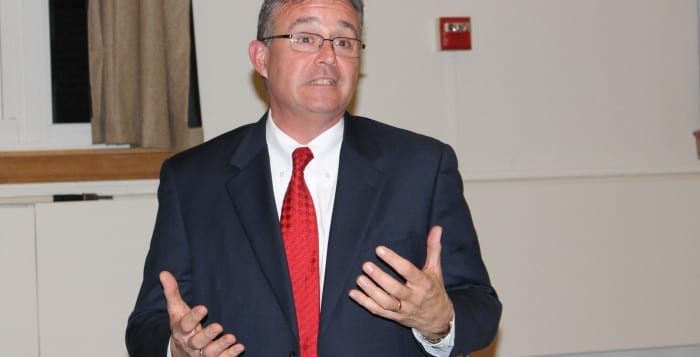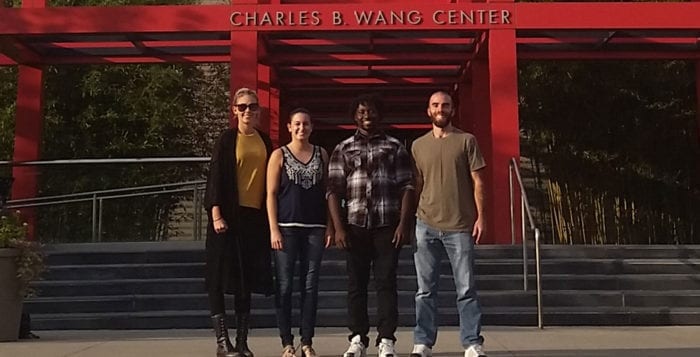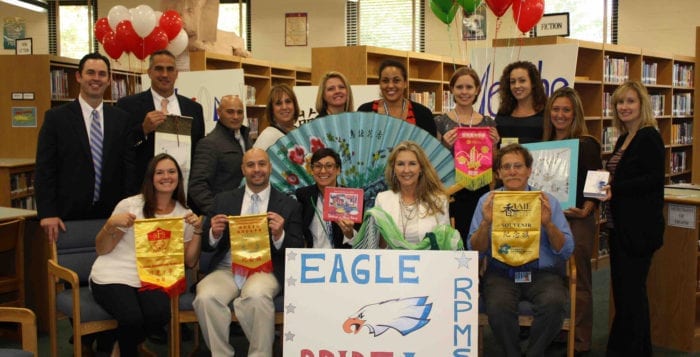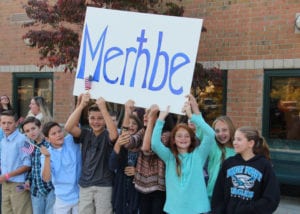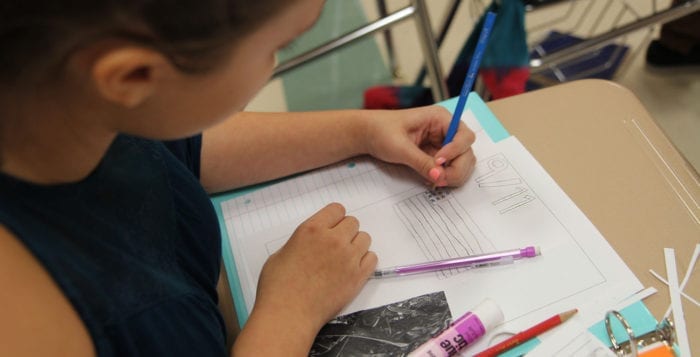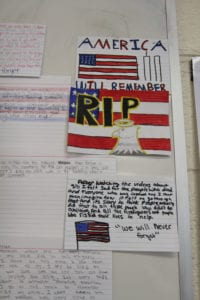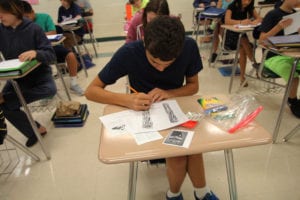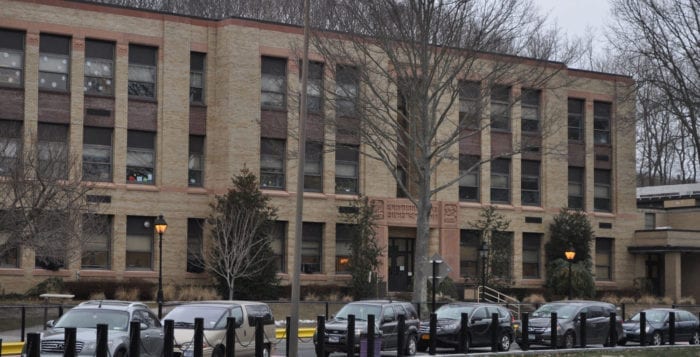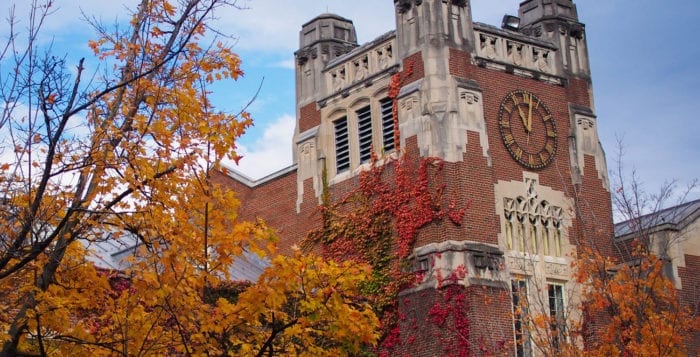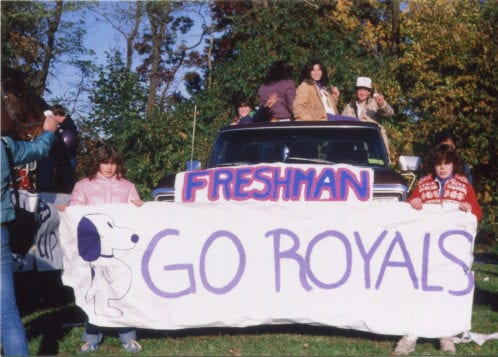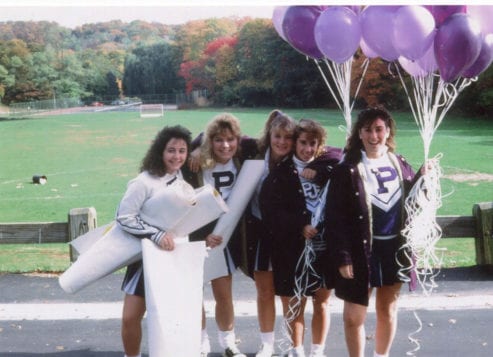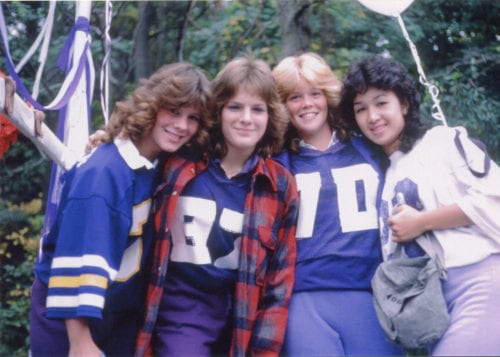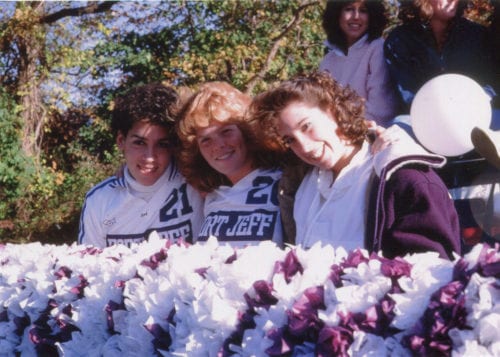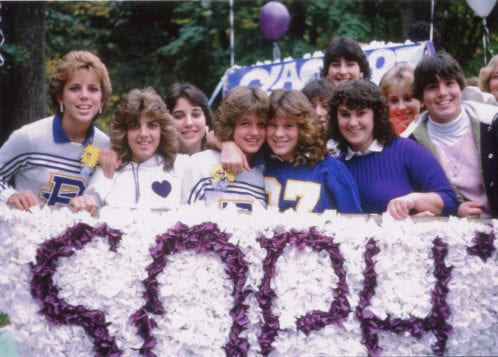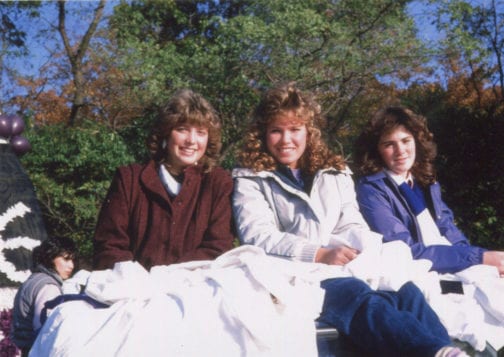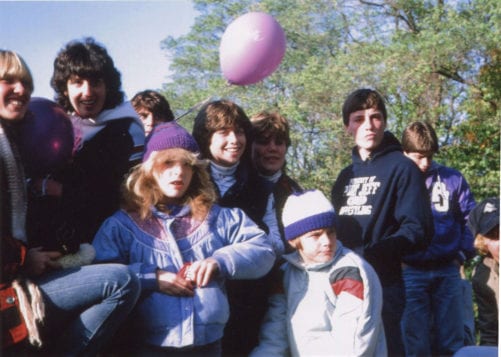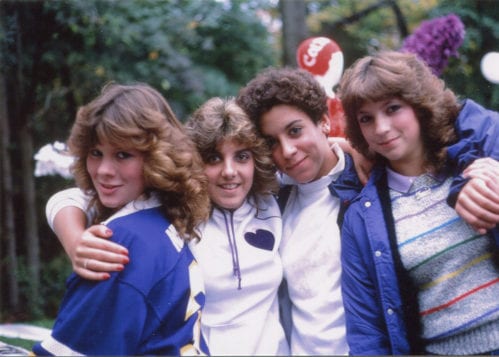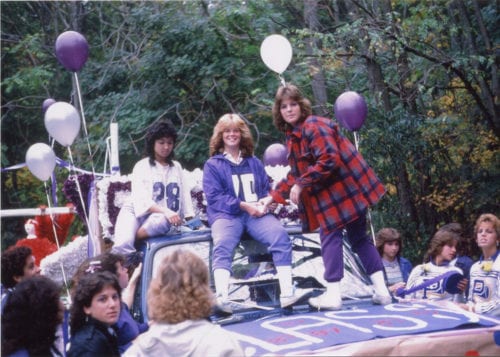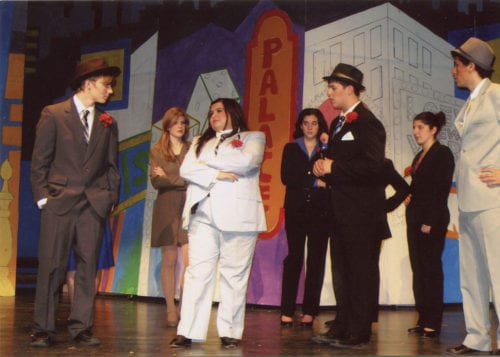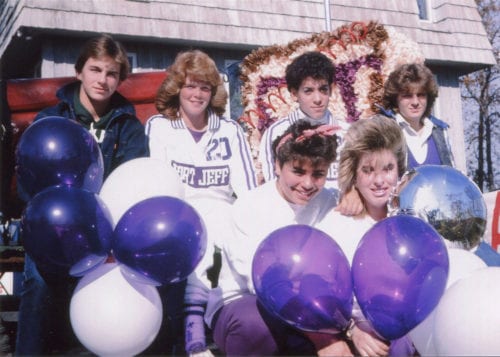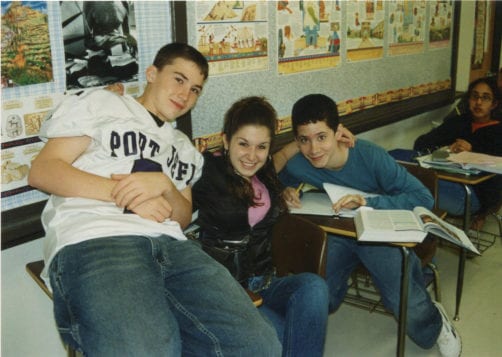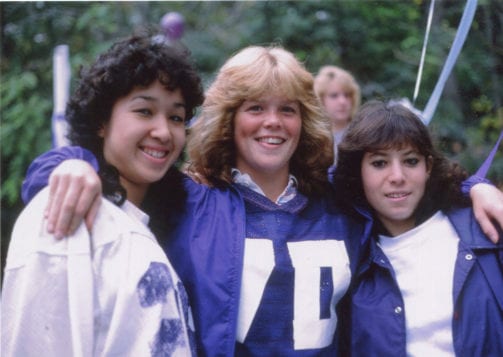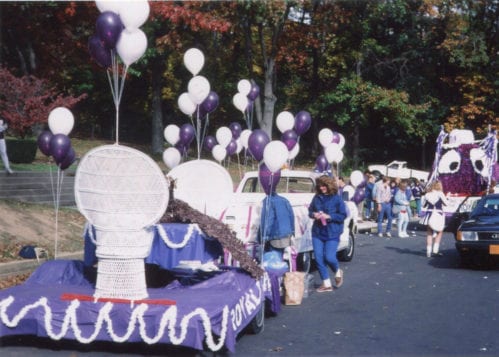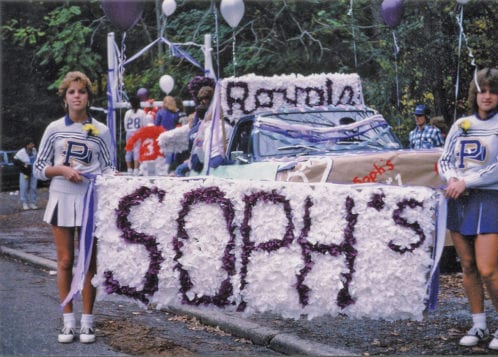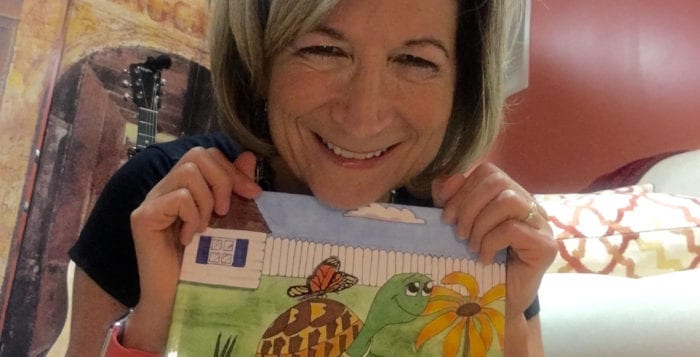By Rita J. Egan
Students and parents filled the Joseph M. Barton auditorium during the Smithtown board of education meeting Sept. 27, to comment on the incident involving Smithtown West teacher Veronica Welsh.
Last week the teacher faced backlash after a Facebook post she published saying, “This week is Spirit Week at Smithtown HS West. It’s easy to spot which students are racist by the Trump gear they’re sporting for USA day.”
Early in the meeting, Superintendent James Grossane addressed the matter.
“One mistake should not outweigh the estimated 10 years of goodness, kindness and positive impact that Coach Welsh gave to the community of Smithtown.” —Student
“As we are all aware one of our teachers posted a statement on social media regarding our students,” he said. “The board of education, administration and staff of the district strive to foster a school atmosphere of tolerance and respect of student’s political and other beliefs. The district does not condone this teacher’s statement in any way.”
Grossane said the district is in the process of an investigation of the incident.
“As soon as the district learned of this teacher’s post, immediate action was taken including directing the teacher to remove the post and reassigning the teacher to duties outside of the classroom,” he said. “An investigation is currently underway utilizing the appropriate legal due process required when a tenure teacher is the subject of an investigation. Because this is a matter involving district personnel, no further comment can be made at this time.”
During the public session of the board meeting, Smithtown resident Gay Campisi expressed her concerns over the social media post.
“For an adult teacher employed by this district to arbitrarily label a child a racist based on a particular political candidate the child appears to support is outrageous and entirely unacceptable behavior,” she said. “What is even more disturbing is that the post raises legitimate concerns for parents about what the particular teacher and other teachers in the district may be saying in the classroom or as part of the curriculum based on their personal political perspective.”
Campisi called for more transparent and concrete corrective action than reassigning Welsh. “Simply moving an offending teacher to a different position does not address the root cause of the problem and can be compared to reshuffling the deck chairs on the Titantic,” she said.
The Smithtown resident suggested in addition to disciplinary action there should be an update of the code of conduct and revised guidelines when it comes to social media use for teachers.
Members from the track and field team Welsh coaches spoke highly of the teacher and coach, and many students in the audience were visibly upset and had tears in their eyes. Parents of the students asked the students not be identified, expressing concern that if someone didn’t agree with them, their child could be targeted.
“The events of the past week have been both disheartening and upsetting,” a 2014 Smithtown West graduate said in a message her sister read at the meeting. “But, what we have to closely evaluate is this: yes, Coach Welsh made a significant mistake. She was wrong, but a mistake should not have the ability to define someone as a person as well as their past and future. One mistake should not outweigh the estimated 10 years of goodness, kindness and positive impact that Coach Welsh gave to the community of Smithtown. The decision you have to make regarding her future is in your hands, and I hope pressure from the community does not influence it.”
A senior male student at West echoed sentiments of Welsh’s character.
“Like my teammates have said before me none of us are here to justify what Ms. Welsh said but as they also said, I want to make it very clear that that is not the kind of person she is,” he said. “What is reflected in that post is not indicative of her character in any way.”
He continued to say when he heard about the post he was caught off guard, and added after being in her class for two years, “nothing of this sort has ever happened in the classroom.” He also said he wanted those in attendance to know that the teacher has never forced any kind of political agenda in the classroom.
At the end of the meeting, Grossane reiterated that the board could not comment on the teacher’s actions any further. However, he added that while principals already discuss social media use at faculty meetings, the district is looking into further training “to sensitize them to the dangers of social media posts.”

